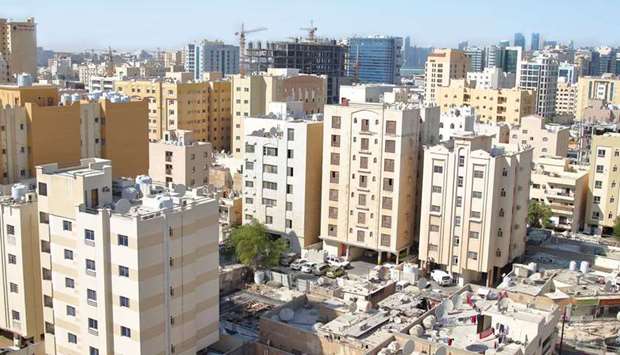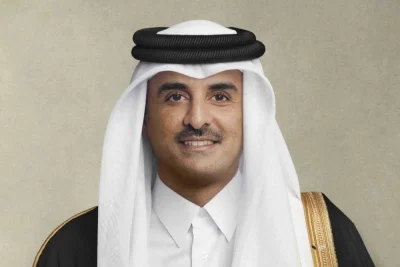Stabilisation of rents and prices in certain sectors is expected in Qatar in the medium-term on account of the recent boost to expectations of stakeholders and lifting of restrictions, noted Pawel Banach, ValuStrat’s general manager, Qatar.
The pandemic did exacerbate or in some cases prolong, the trajectory of the decline of performance for certain sectors of Qatar’s real estate market, Banach noted.
At the beginning of the second quarter of 2021, restrictions were re-imposed limiting mobility amid rising Covid-19 cases. Operating capacities of commercial outlets were reduced and dine-in at F&B outlets was banned.
However, the constraints did not hinder the recovery of the real estate market in Qatar. The volume of transactions surged 46% over one year and 34% over two years (pre-Covid-19).
Moreover, there was an improvement in the performance of hotel, villa, and warehouse markets. This is evidence of improved buyer confidence stemming from several factors: Increasing competitiveness of properties, the introduction of policies facilitating foreign investment, normalisation of relations with GCC countries, and positive reinforcements from holding of World Cup in 2022, Banach said.
The second quarter 2021 review issued by consulting firm ValuStrat reported a surge in transactions volume and value compared to 2020 and 2019 (pre-Covid). Softer quarterly declines were recorded for prices and rents of villas.
Hotel occupancy and ADRs improved compared to 2020 due to the boost from growing domestic tourism. Rents of warehouses also expanded during the quarter.
Qatar’s ValuStrat Price Index (VPI) a valuation-based index (100 points base set in Q1 2016), that tracks the change in capital values for a representative fixed basket of properties, showed an overall 5.9% annual fall in capital values for the residential sector, with a marginal quarterly decline of just 1.1%.
The average capital value of a residential unit stood at QR7,238 per sq m (QR672 per sq ft). More specifically, apartments were QR10,350 per sq m (QR960 per sq ft) and villas were QR5,689 per sq m (QR529 per sq ft).
Seven locations (Al Wakrah, Umm Salal Ali, Umm Salal Mohammed, Duhail, Al Dafna, Old Airport and Muaither) experienced a marginal change of less than 0.5% since the previous quarter. The highest quarterly depreciation of 4.7% in capital values was observed in the Ain Khaled cluster.
Housing stock totalled 306,515 units with the addition of 1,800 units during the second quarter of 2021. Projects handed over during the quarter were situated in Lusail (Fox Hills, Erkhyah and Marina District), The Pearl (Al Mutahidah towers and Abraj Bay Tower 2), Al Dafna, Luqta, Umm Ghuwailina and New Doha. As many as 4,900 residential units are in the pipeline by the end of the year.
The median residential asking rent fell 5.1% over the past 12 months and 1.1% since the first quarter of 2021. Quoted median rents for apartments fell 1.2% QoQ, while for villas asking rents slightly reduced by 0.5% QoQ.
Despite a continued influx of supply in The Pearl and Lusail, these areas experienced a relatively softer annual decline in rents due to faster absorption compared to secondary locations.
Anum Hasan, market research manager, ValuStrat said: “The bulk of the supply is coming in the form of apartments, while we see comparatively marginal increases in the number of villas. This might partially explain a new trend we have experienced since beginning of the pandemic last year, where declines in villa rents were less compared to apartments. Moreover, the average quarterly drops for apartment rentals widened over the last 12 months when compared to villas, as quarterly falls in median rent were easing.”
The pandemic did exacerbate or in some cases prolong, the trajectory of the decline of performance for certain sectors of Qatar’s real estate market, Banach noted.
At the beginning of the second quarter of 2021, restrictions were re-imposed limiting mobility amid rising Covid-19 cases. Operating capacities of commercial outlets were reduced and dine-in at F&B outlets was banned.
However, the constraints did not hinder the recovery of the real estate market in Qatar. The volume of transactions surged 46% over one year and 34% over two years (pre-Covid-19).
Moreover, there was an improvement in the performance of hotel, villa, and warehouse markets. This is evidence of improved buyer confidence stemming from several factors: Increasing competitiveness of properties, the introduction of policies facilitating foreign investment, normalisation of relations with GCC countries, and positive reinforcements from holding of World Cup in 2022, Banach said.
The second quarter 2021 review issued by consulting firm ValuStrat reported a surge in transactions volume and value compared to 2020 and 2019 (pre-Covid). Softer quarterly declines were recorded for prices and rents of villas.
Hotel occupancy and ADRs improved compared to 2020 due to the boost from growing domestic tourism. Rents of warehouses also expanded during the quarter.
Qatar’s ValuStrat Price Index (VPI) a valuation-based index (100 points base set in Q1 2016), that tracks the change in capital values for a representative fixed basket of properties, showed an overall 5.9% annual fall in capital values for the residential sector, with a marginal quarterly decline of just 1.1%.
The average capital value of a residential unit stood at QR7,238 per sq m (QR672 per sq ft). More specifically, apartments were QR10,350 per sq m (QR960 per sq ft) and villas were QR5,689 per sq m (QR529 per sq ft).
Seven locations (Al Wakrah, Umm Salal Ali, Umm Salal Mohammed, Duhail, Al Dafna, Old Airport and Muaither) experienced a marginal change of less than 0.5% since the previous quarter. The highest quarterly depreciation of 4.7% in capital values was observed in the Ain Khaled cluster.
Housing stock totalled 306,515 units with the addition of 1,800 units during the second quarter of 2021. Projects handed over during the quarter were situated in Lusail (Fox Hills, Erkhyah and Marina District), The Pearl (Al Mutahidah towers and Abraj Bay Tower 2), Al Dafna, Luqta, Umm Ghuwailina and New Doha. As many as 4,900 residential units are in the pipeline by the end of the year.
The median residential asking rent fell 5.1% over the past 12 months and 1.1% since the first quarter of 2021. Quoted median rents for apartments fell 1.2% QoQ, while for villas asking rents slightly reduced by 0.5% QoQ.
Despite a continued influx of supply in The Pearl and Lusail, these areas experienced a relatively softer annual decline in rents due to faster absorption compared to secondary locations.
Anum Hasan, market research manager, ValuStrat said: “The bulk of the supply is coming in the form of apartments, while we see comparatively marginal increases in the number of villas. This might partially explain a new trend we have experienced since beginning of the pandemic last year, where declines in villa rents were less compared to apartments. Moreover, the average quarterly drops for apartment rentals widened over the last 12 months when compared to villas, as quarterly falls in median rent were easing.”




